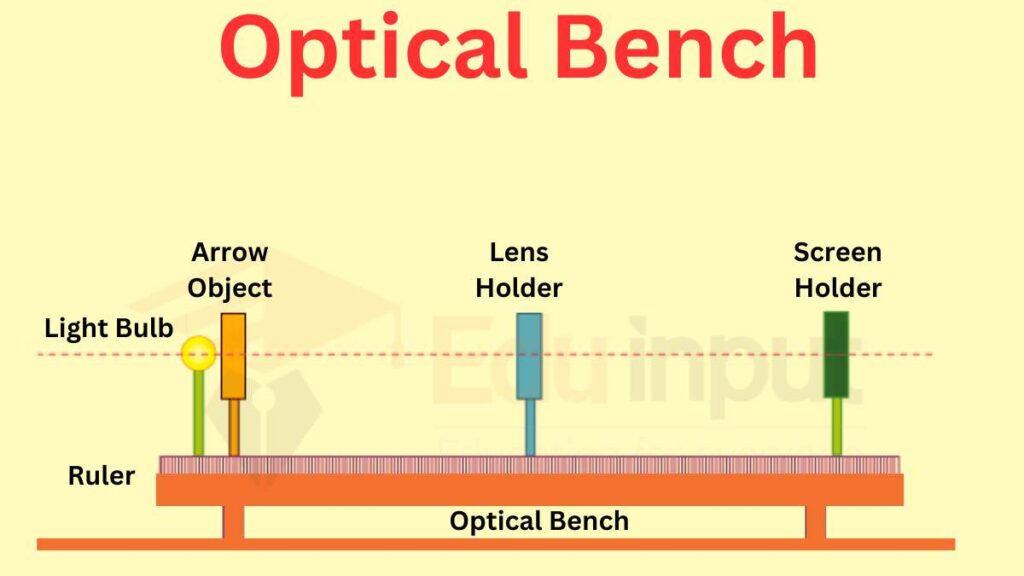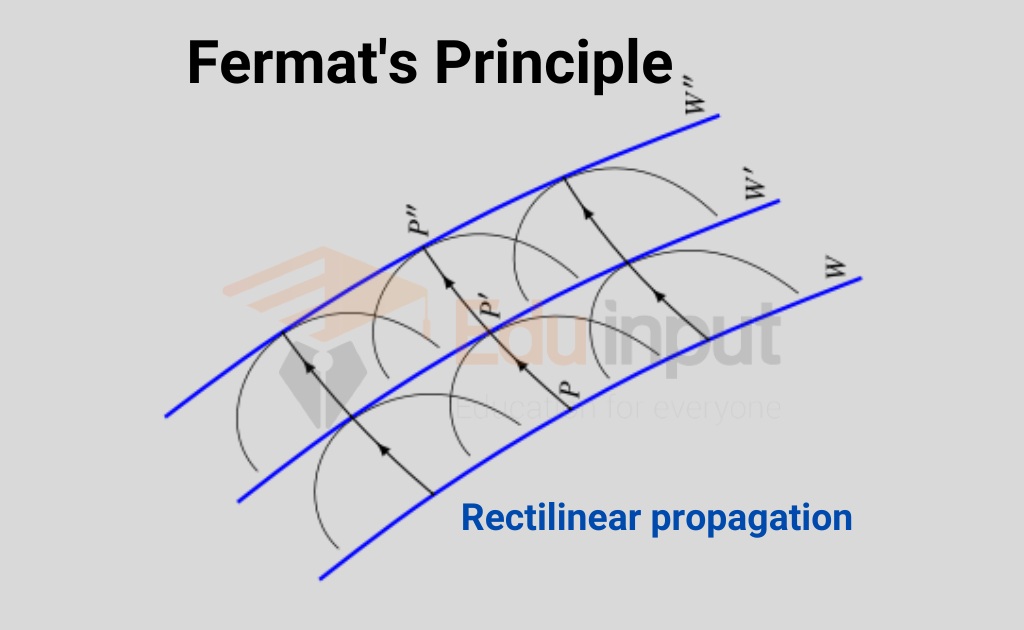Optical Bench-Definition, Parts, And Applications
An optical bench is a crucial tool in the field of optics that provides a stable and adjustable platform for conducting various experiments, demonstrations, and measurements. It is widely used in research laboratories, educational institutions, and industries to study and analyze the behavior of light and optical components.
What is an Optical Bench?
The study of light and optics requires precise measurements and controlled experimental setups.
An optical bench is a specialized tool designed to support and align optical components such as lenses, mirrors, prisms, filters, and detectors in a controlled manner. It provides a stable and rigid platform for arranging these components to create optical systems and study their characteristics.
Researchers can precisely control the positions and orientations of the optical elements, allowing them to investigate the behavior of light and optimize the performance of optical systems by using an optical bench.
Components of an Optical Bench
An optical bench consists of several key components that work together to form a functional and versatile platform for optical experiments.

1. Base
The base of an optical bench is a long and sturdy structure made of high-quality material such as aluminum or stainless steel. It provides stability and rigidity to the entire setup, minimizing vibrations and unwanted movements that could affect the accuracy of measurements. The base typically has a linear scale along its length, allowing precise positioning of the optical mounts and components.
2. Rulers and Scales
Optical benches are equipped with rulers and scales along their length. These markings enable researchers to measure the positions of optical components with great precision. The scales may be in millimeters or inches, depending on the system’s requirements. Accurate measurements are crucial for aligning and calibrating the optical setup.
3. Optical Mounts
Optical mounts are fixtures attached to the optical bench that securely hold the optical components in place. They allow easy adjustment and precise positioning of the components along the bench’s length. Optical mounts may have micrometer screws or knobs for fine-tuning the alignment and orientation of the optical elements.
4. Optical Components
Optical components such as lenses, mirrors, prisms, filters, and beam splitters are integral parts of an optical bench. These components can be mounted on optical mounts and arranged in various configurations to study different optical phenomena. The selection and arrangement of these components depend on the specific experiment or application.
5. Light Source
A suitable light source is essential for conducting optical experiments. Optical benches often include a light source, such as a laser or a lamp, that emits a well-defined and controlled light beam. The light source is positioned at one end of the bench, and the beam is directed toward the optical components under investigation.
6. Optical Accessories
Optical benches may also incorporate additional accessories, such as beam splitters, filters, apertures, and detectors, to modify or analyze the light passing through the optical system. These accessories expand the capabilities of the bench and enable researchers to perform more complex experiments and measurements.
Setting up an Optical Bench
Setting up an optical bench requires careful planning and attention to detail. Here are the essential steps involved in assembling and aligning an optical bench:
1. Choosing the Right Location
Selecting an appropriate location for the optical bench is crucial. It should be a stable surface, free from vibrations and disturbances that could affect the accuracy of measurements. Ideally, the bench should be placed in a dedicated optical laboratory or a controlled environment where external factors can be minimized.
2. Assembling the Base and Mounts
Start by assembling the base of the optical bench according to the manufacturer’s instructions. Attach the optical mounts at suitable intervals along the bench, ensuring they are securely fastened. Take care to align the scales and rulers properly to enable accurate measurements.
3. Aligning the Optical Components
Mount the desired optical components on the optical mounts, ensuring they are securely fixed. Use the ruler and scales to position the components at the desired locations. Fine-tune the alignment and orientation of the components using the micrometer screws or knobs on the mounts. It is crucial to align the components accurately to achieve optimal performance and accurate results.
Applications of Optical Benches
Optical benches find applications in various fields where precise optical measurements and experiments are required.
1. Optical Experiments and Demonstrations
Optical benches are extensively used in research laboratories and educational institutions for conducting a wide range of optical experiments and demonstrations. They enable researchers and students to explore concepts such as refraction, reflection, interference, diffraction, and polarization of light.
2. Research and Development
In the field of optics and photonics, optical benches play a vital role in research and development activities. They are utilized to investigate new optical materials, characterize optical devices, and develop advanced optical systems for various applications, including telecommunications, imaging, spectroscopy, and metrology.
3. Educational Purposes
Optical benches are indispensable tools in optical education. They provide hands-on experience to students, allowing them to understand and visualize fundamental optical principles. Optical benches enable students to perform experiments, observe optical phenomena, and gain practical knowledge in optics.
4. Optical Testing and Calibration
Optical benches serve as reliable platforms for testing and calibrating optical instruments and devices. By precisely aligning optical components and using calibrated scales, researchers can accurately measure parameters such as focal lengths, beam profiles, and transmission properties of optical elements.
Advantages of Using an Optical Bench
The use of an optical bench offers several advantages for optical experiments and measurements.
1. Precise Measurements
Optical benches provide a controlled and stable platform for making precise measurements. The ruler and scales integrated into the bench allow researchers to determine the positions of optical components with high accuracy. This precision is essential for achieving accurate experimental results and verifying theoretical predictions.
2. Stable Platform
The rigid base of an optical bench minimizes vibrations and unwanted movements that can affect the alignment and stability of optical components. This stability ensures consistent and repeatable measurements, especially in sensitive experiments that require high precision.
3. Versatility and Flexibility
Optical benches offer versatility and flexibility in configuring optical setups. Researchers can easily change the arrangement and combination of optical components to suit different experiments and applications. This adaptability allows for a wide range of optical investigations and the exploration of various optical phenomena.
4. Ease of Alignment and Adjustments
Optical benches simplify the alignment and adjustments of optical components. The presence of micrometer screws or knobs on the optical mounts enables fine-tuning of positions, angles, and orientations of the components. This ease of adjustment saves time and effort, making the setup process more efficient.
Limitations and Considerations
While optical benches are valuable tools in optics, they do have certain limitations and considerations that need to be taken into account:
1. Cost and Space Requirements
Optical benches can be relatively expensive, especially when equipped with advanced features and accessories. Additionally, they require dedicated space in a controlled environment, which may not be readily available in all settings. The cost and space considerations should be evaluated based on the specific needs and budget constraints.
2. Environmental Factors
Optical benches are sensitive to environmental factors such as temperature, humidity, and air currents. These factors can introduce uncertainties and errors in the measurements. Therefore, it is important to minimize environmental disturbances and maintain stable conditions during optical experiments.
3. Maintenance and Care
Proper maintenance and care are essential to ensure the longevity and performance of an optical bench. Regular cleaning of optical components, lubrication of moving parts, and periodic calibration are necessary to maintain the accuracy and reliability of the bench. Following manufacturer guidelines and best practices for maintenance is crucial.
Related FAQs
What is the optical bench used for?
The optical bench is used for conducting precise optical experiments, measurements, and demonstrations.
What are the materials used in optical benches?
The materials commonly used in optical benches are aluminum or stainless steel for the base, along with various optical mounts and components made of glass, plastic, or other suitable materials.
Which lens is used in the optical bench?
Various lenses can be used in an optical bench depending on the specific experiment or application. Common types of lenses include convex lenses, concave lenses, and cylindrical lenses.
Who invented the optical bench?
The optical bench was invented by the Italian researcher Macedonio Melloni (1798-1854) and was widely used during the mid-19th century.

 written by
written by 





Leave a Reply